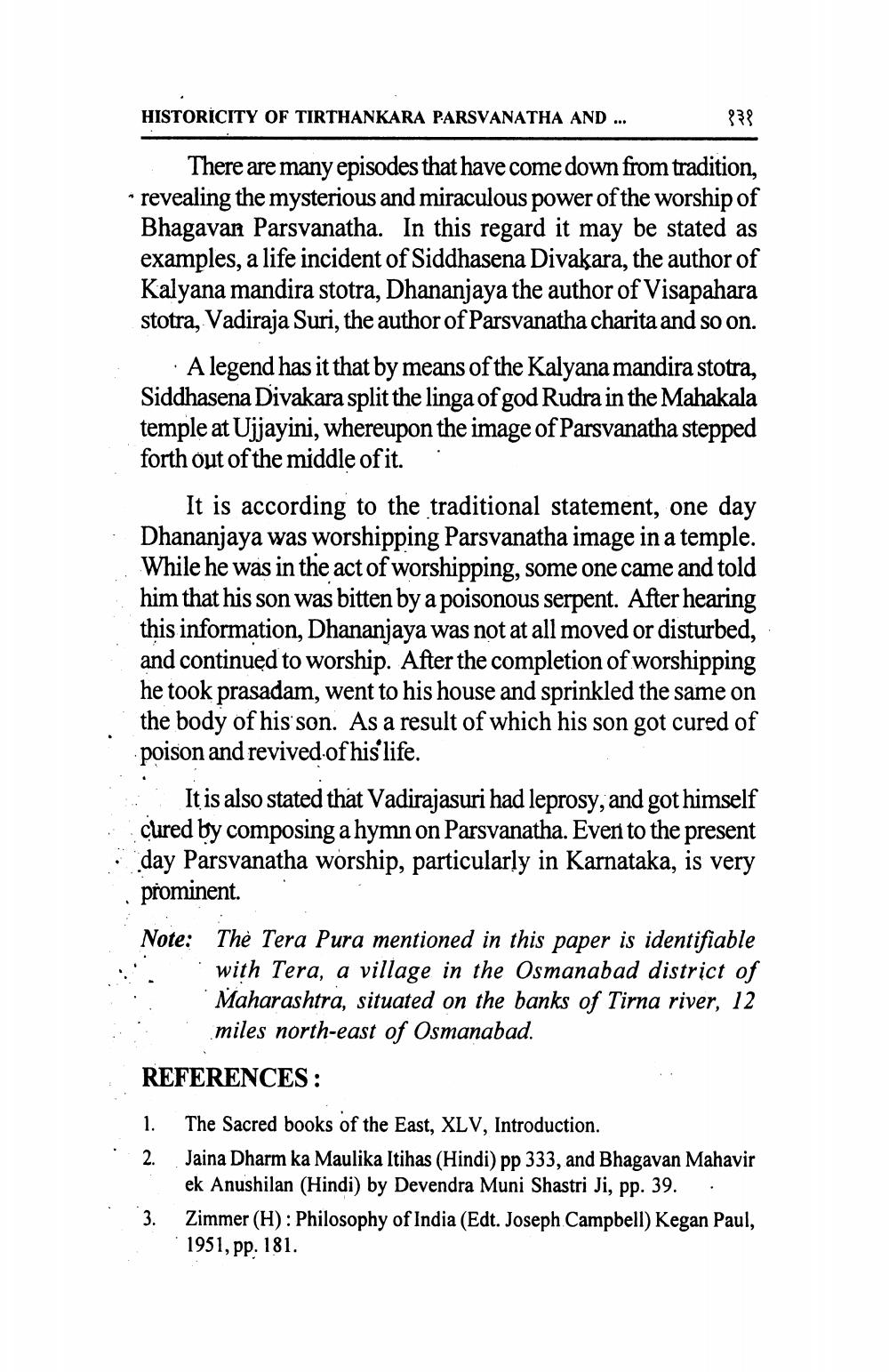________________
HISTORICITY OF TIRTHANKARA PARSVANATHA AND ...
१३१
There are many episodes that have come down from tradition, * revealing the mysterious and miraculous power of the worship of
Bhagavan Parsvanatha. In this regard it may be stated as examples, a life incident of Siddhasena Divakara, the author of Kalyana mandira stotra, Dhananjaya the author of Visapahara stotra, Vadiraja Suri, the author of Parsvanatha charita and so on.
· A legend has it that by means of the Kalyana mandira stotra, Siddhasena Divakara split the linga of god Rudra in the Mahakala temple at Ujjayini, whereupon the image of Parsvanatha stepped forth out of the middle of it.
It is according to the traditional statement, one day Dhananjaya was worshipping Parsvanatha image in a temple. While he was in the act of worshipping, some one came and told him that his son was bitten by a poisonous serpent. After hearing this information, Dhananjaya was not at all moved or disturbed, and continued to worship. After the completion of worshipping he took prasadam, went to his house and sprinkled the same on the body of his son. As a result of which his son got cured of poison and revived of his life.
It is also stated that Vadirajasuri had leprosy, and got himself cured by composing a hymn on Parsvanatha. Even to the present day Parsvanatha worship, particularly in Karnataka, is very prominent. Note: Thé Tera Pura mentioned in this paper is identifiable
with Tera, a village in the Osmanabad district of * Maharashtra, situated on the banks of Tirna river, 12
miles north-east of Osmanabad. REFERENCES:
1. 2.
The Sacred books of the East, XLV, Introduction. Jaina Dharm ka Maulika Itihas (Hindi) pp 333, and Bhagavan Mahavir ek Anushilan (Hindi) by Devendra Muni Shastri Ji, pp. 39. . Zimmer (H): Philosophy of India (Edt. Joseph Campbell) Kegan Paul, 1951, pp. 181.




